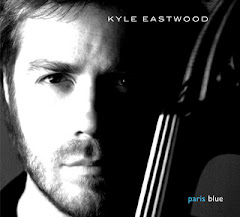Here’s an updated review of a book I skimmed through a few
years back and have since revisited and read cover-to-cover in the last month.
Although The 101 Best Jazz Albums is getting quite long in tooth, I still found
it to be one of the most useful and interesting looks at jazz records, possibly
second only to Penguin Guide to Jazz Recordings. (Or maybe third after Leonard Feather’s Encyclopedia of jazz, although
that, too, is getting quite dated and as an "encyclopedia", is not a "sit down and read" type of book.) Still, as a study of jazz and jazz
recordings, 101 Best has a lot of value and impact, in part because it was written
so long ago, before CD’s and way before MP3’s, iTunes, and the digital music
era. So, when Mr. Lyons says something like, “This was a great recording that,
sadly, (some record company) has decided to take out of its catalog”, the
reader can discount such comments and although one maybe can’t assume it’s
available somewhere, you can still fire up Google and maybe track down a vinyl,
or even digital, copy. So, if you’re using this book as a buying guide, it
becomes a little tricky, but if you’re using this just to learn about the
history of jazz through records, this book is unparalleled.
The author breaks the book down chronologically, but as most
historians and jazz fans will know, dividing up jazz chronologically leads to
easy divisions of the kind of jazz being talked about. So, in Mr. Lyons’s
telling you end up with (roughly) Pre-1920: Ragtime, Dixieland; 1920’s: swing;
1930’s: big band, dance; 1940’s: swing to be-bop; 1950’s: bop and post-bop; 1960’s:
modal; 1970’s: fusion; later than that: free jazz. Again, roughly. In addition
to the 101 albums cited in the book, Mr. Lyons makes mention of many other
albums that were recorded, either as precursors to the ones mentioned in the
text, or as follow ups. He is careful, also, to provide some reflection and
analysis on the impact the recordings had on the artists’ careers and their
overall outlook on jazz. There are black and white graphics of the albums that
are called out, and there’s a section of black and white photos of some of the
more famous musicians during their more “impactful” sessions. (Serious jazz
fans will have seen most of these photos before.) Sometimes the author allows
himself to get a little subjective, and there were a few (just a few) times
where he made what I thought were rather personal statements and comments that
really had no place in discussion of the recording or were just plain wrong.
But everyone is entitled to his or her opinion, and this is Mr. Lyons’ book, so
I’m willing to look past that and move on to the next discussion. (Plus it was
fun to read what the author thought about, for example, Miles Davis’ hiatus and
what sort of music Miles might break into in the twilight of his career –
before he died, of course.)
I like this book for how it ties the history of jazz to the
recordings that were made over the years, and I like how it weaves together the
recordings, players, studios and producers to give an overall tapestry of the
business of jazz recordings from its inception to the modern day (in the late
1970’s, mind you). It provides lots of ideas and suggestions for adding to
one’s jazz music collection, and for fans of specific genres of jazz, it
provides a lot of ideas for introduction of, study of, and listening to genres
with which the reader might not be so familiar. For whatever reason you choose
to read this book, it’s a clear and open window to some interesting jazz
history, so even in its dotage, I give it five stars. (If this were my Amazon review...)











